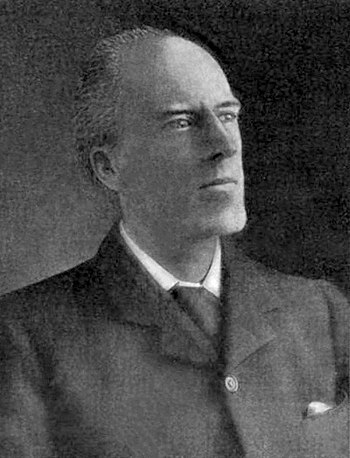-
mining, and fishing district,—largely mining. Here we see a very sharp drop in the birth rate in 1867, another about 1887, and then a rapid decline.
Again the query, What happened about 1867 and, 1887 to affect the birth rate of the mining district of Cornwall?
The birth rate of York, which is chiefly a county town and trading center, with no great manufacturing interests. Here the drop begins in 1887 and the decline continues.
Once more, Why in 1887—what happened then?

KARL PEARSON
Equally distinguished as mathematician, lecturer, writer, and organizer of statistical research
Now let us look for an answer to these questions. We can take it as an axiom that nothing ever "happens"—happens by blind chance, that is. Something must have taken place in those years to affect the birthrate—in 1867 and 1887 for the mining districts, 1877 for the industrial towns, and 1887 again for the county towns and trading centers like York, which keep shop for a large outlying section.
Furthermore, whatever took place at these times must be something that has remained in force, because the birth rate has never "come back." There is no mere wave of fluctuation. The depressing influence, whatever it was, was something continuous and cumulative. Now, what was it?
Only one social phenomenon in England stands out to meet the conditions imposed by our question,—the laws against child-labor.
This is what happened, the only thing that did happen in England at those periods, which could conceivably affect the birth rate.
Let us look closer: From 1864 to 1867 we see a series of Acts of Parliament applying, among other things, to the iron, steel, and copper industries, culminating in the Workshop Regulation Act of 1867, forbidding the employment of children under eight, and from eight to thirteen, except as "half-timers." Readers may go back to Mrs. Burnett's earlier stories for the economic circumstances of this Act. This group of Acts was passed between 1864 and 1867: and in 1867, down went the birth rate in the mining districts of Cornwall.
In 1877 we have the Compulsory Education Act, and in 1878 an Act, too complex to be described here, raising the age of child-employment and in various ways throwing especially discouraging responsibility on the employer of child-labor. Down went the birth rate in the factory towns, like Bradford, Bolton, and Leeds.
In 1887 we have the Mines Act, which applied to child-labor on minerals, fire-clay, pottery-clay, etc., as well as iron and coal. The Act applied to labor in the above-ground preparation of these minerals for use, as well
